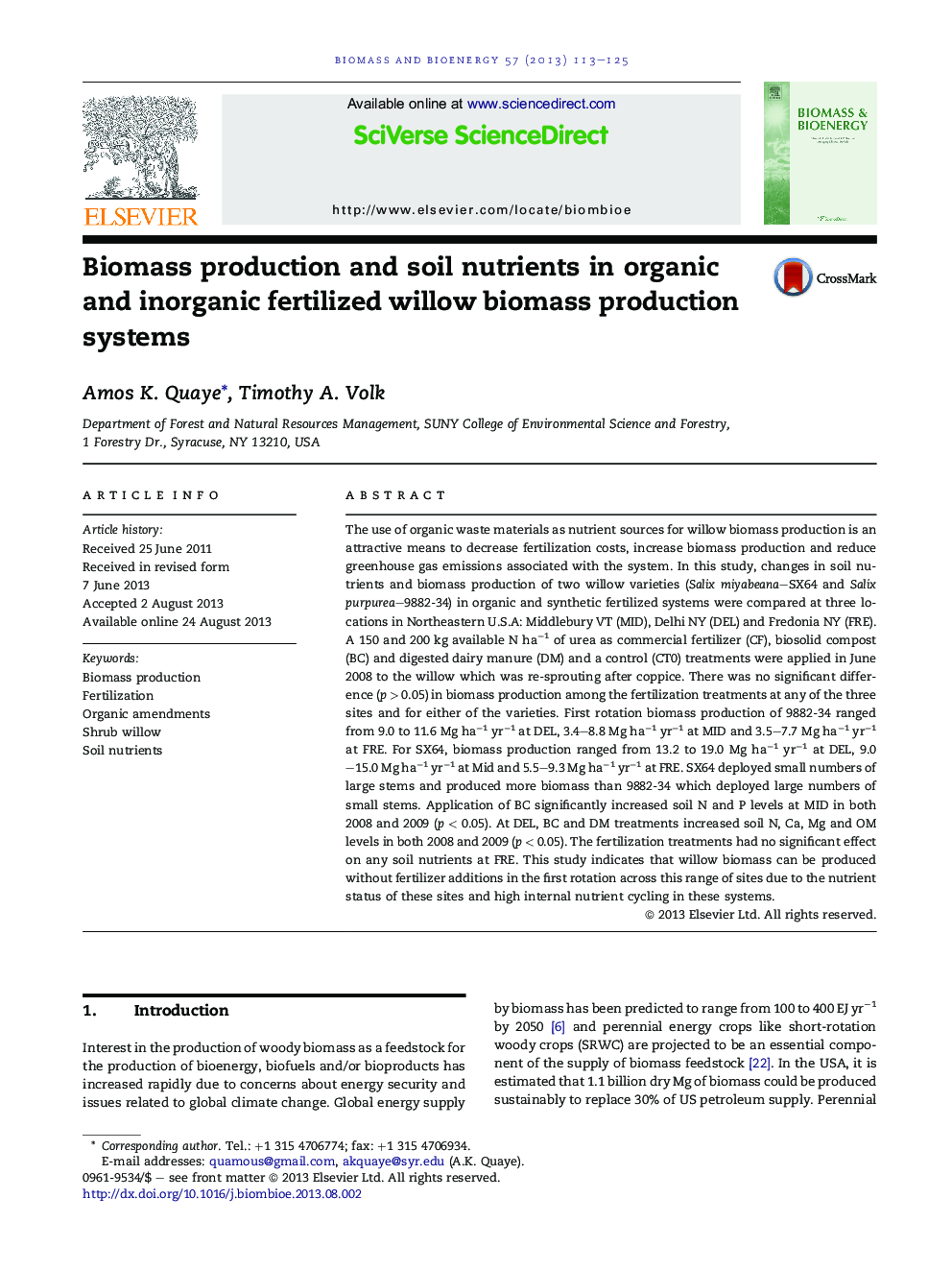| Article ID | Journal | Published Year | Pages | File Type |
|---|---|---|---|---|
| 676984 | Biomass and Bioenergy | 2013 | 13 Pages |
•Neither organic nor synthetic fertilization significantly improved biomass production in any of the three sites.•Optimal willow biomass can be produced without fertilizer additions in the first rotation across this range of sites.•Organic amendment however improved soil nutrients levels significantly at the Delhi and Middlebury study sites.•The economic and environmental costs of commercial fertilizers in the production of willow biomass can be eliminated.
The use of organic waste materials as nutrient sources for willow biomass production is an attractive means to decrease fertilization costs, increase biomass production and reduce greenhouse gas emissions associated with the system. In this study, changes in soil nutrients and biomass production of two willow varieties (Salix miyabeana–SX64 and Salix purpurea–9882-34) in organic and synthetic fertilized systems were compared at three locations in Northeastern U.S.A: Middlebury VT (MID), Delhi NY (DEL) and Fredonia NY (FRE). A 150 and 200 kg available N ha−1 of urea as commercial fertilizer (CF), biosolid compost (BC) and digested dairy manure (DM) and a control (CT0) treatments were applied in June 2008 to the willow which was re-sprouting after coppice. There was no significant difference (p > 0.05) in biomass production among the fertilization treatments at any of the three sites and for either of the varieties. First rotation biomass production of 9882-34 ranged from 9.0 to 11.6 Mg ha−1 yr−1 at DEL, 3.4–8.8 Mg ha−1 yr−1 at MID and 3.5–7.7 Mg ha−1 yr−1 at FRE. For SX64, biomass production ranged from 13.2 to 19.0 Mg ha−1 yr−1 at DEL, 9.0–15.0 Mg ha−1 yr−1 at Mid and 5.5–9.3 Mg ha−1 yr−1 at FRE. SX64 deployed small numbers of large stems and produced more biomass than 9882-34 which deployed large numbers of small stems. Application of BC significantly increased soil N and P levels at MID in both 2008 and 2009 (p < 0.05). At DEL, BC and DM treatments increased soil N, Ca, Mg and OM levels in both 2008 and 2009 (p < 0.05). The fertilization treatments had no significant effect on any soil nutrients at FRE. This study indicates that willow biomass can be produced without fertilizer additions in the first rotation across this range of sites due to the nutrient status of these sites and high internal nutrient cycling in these systems.
